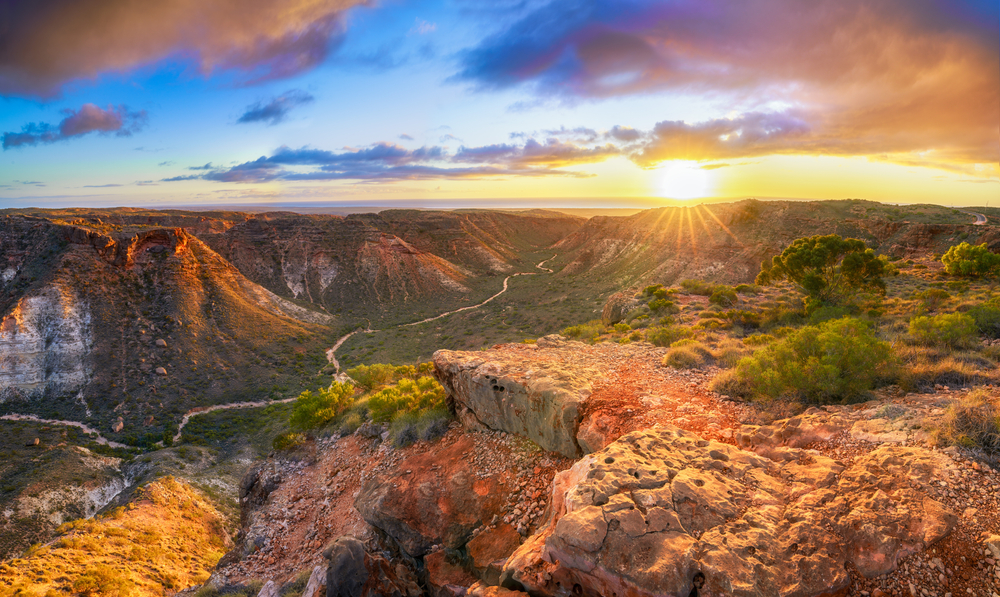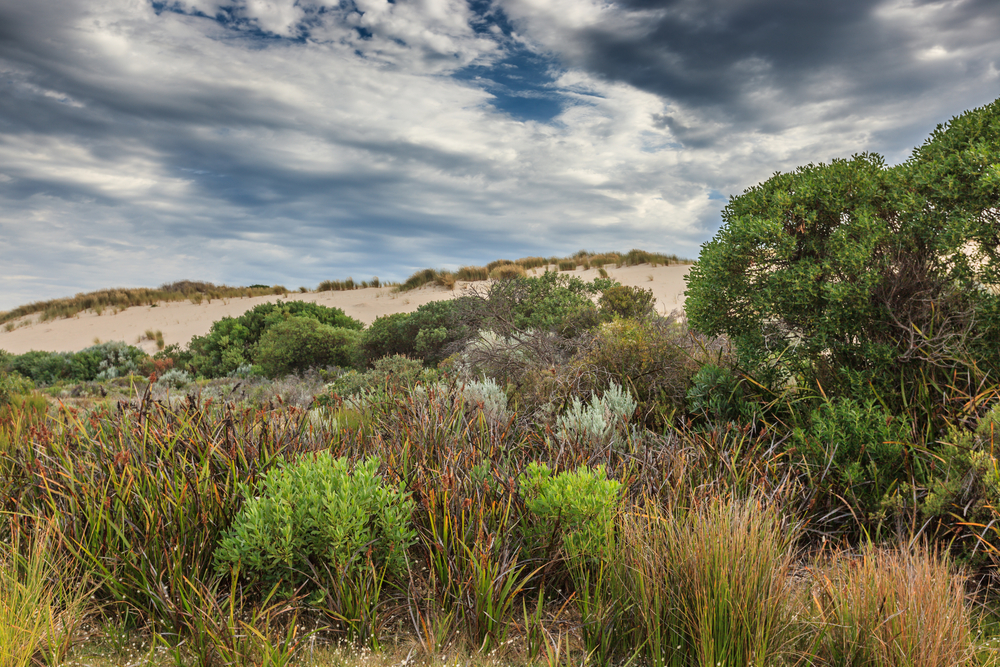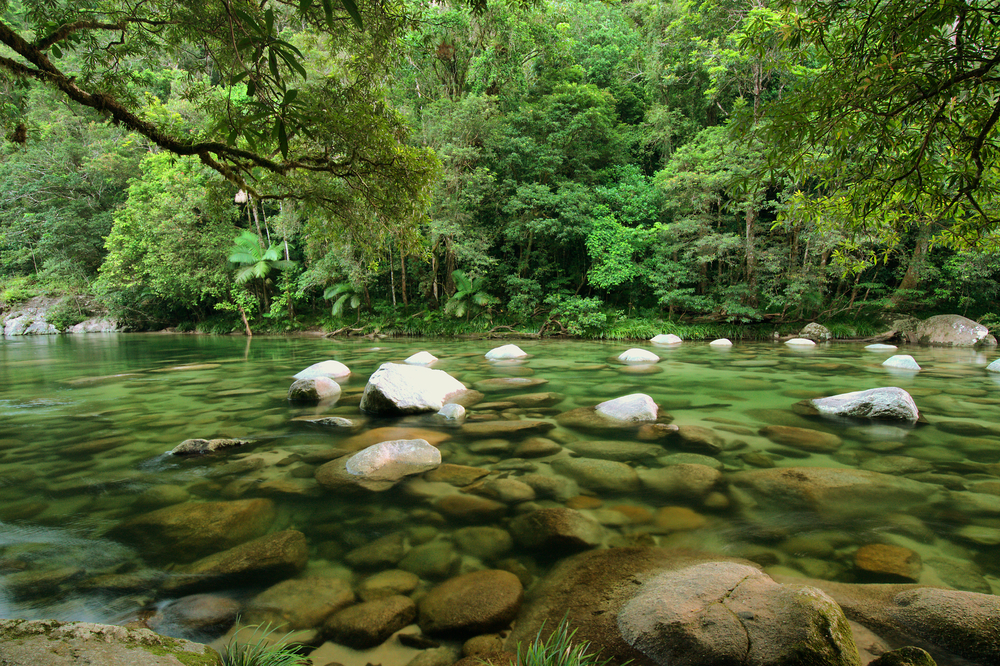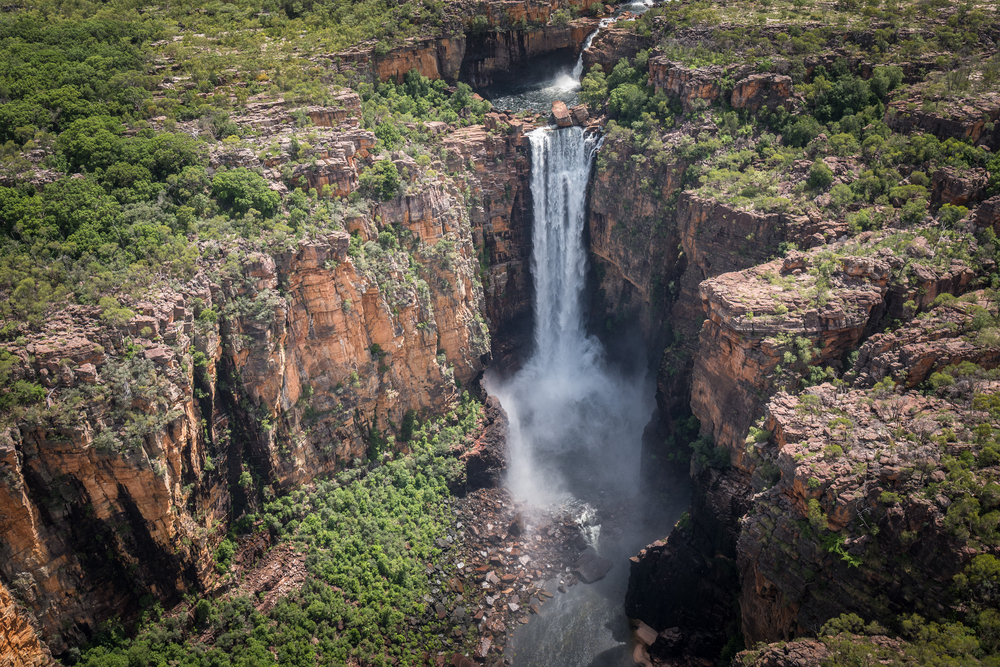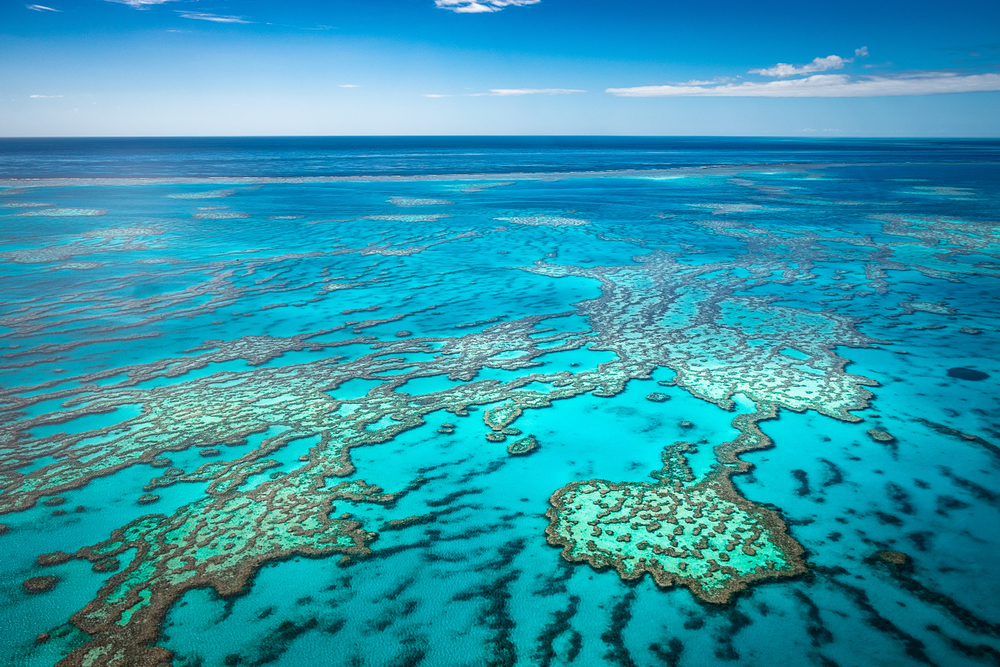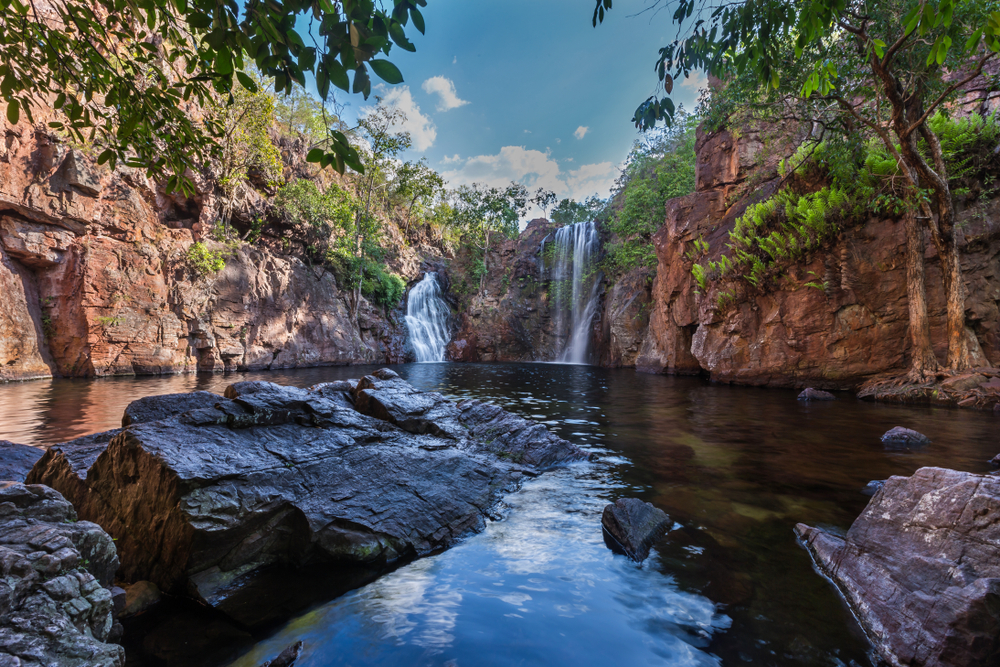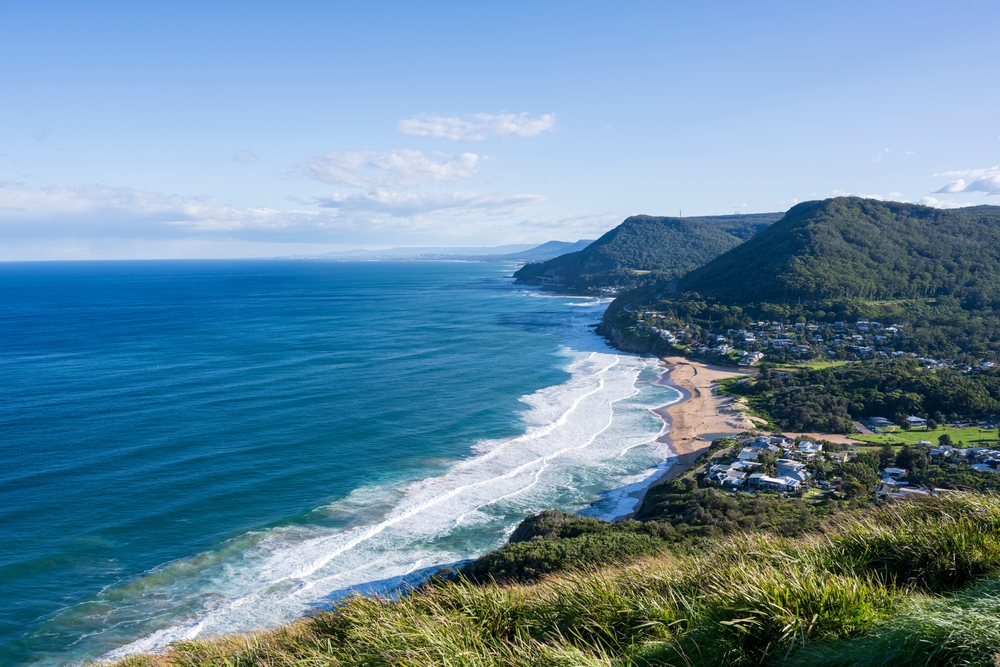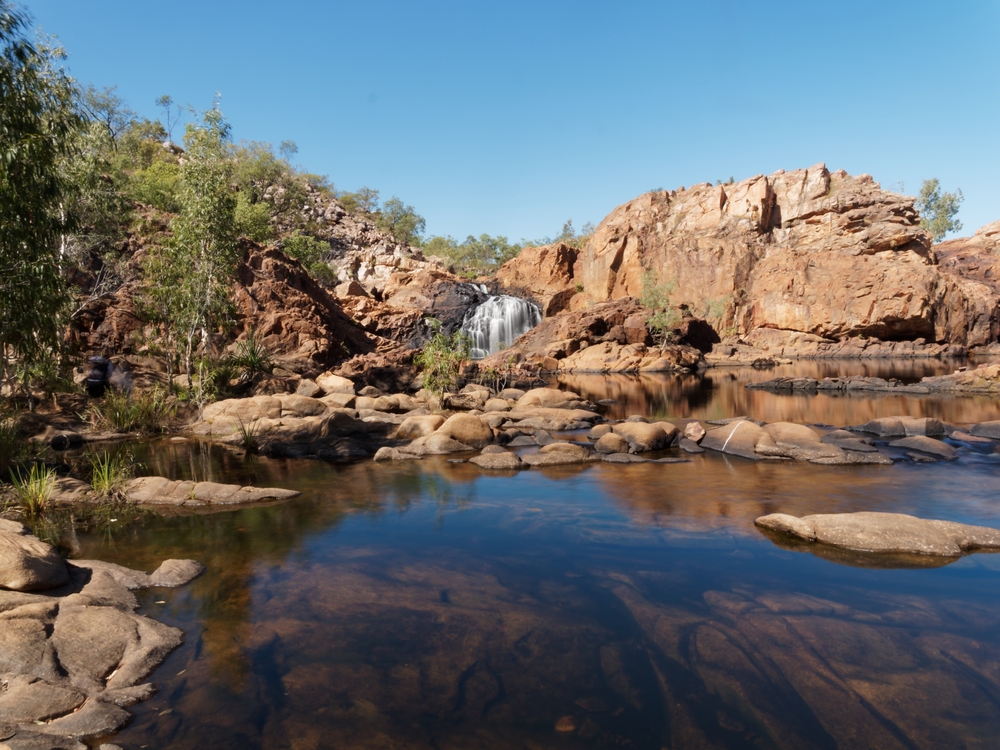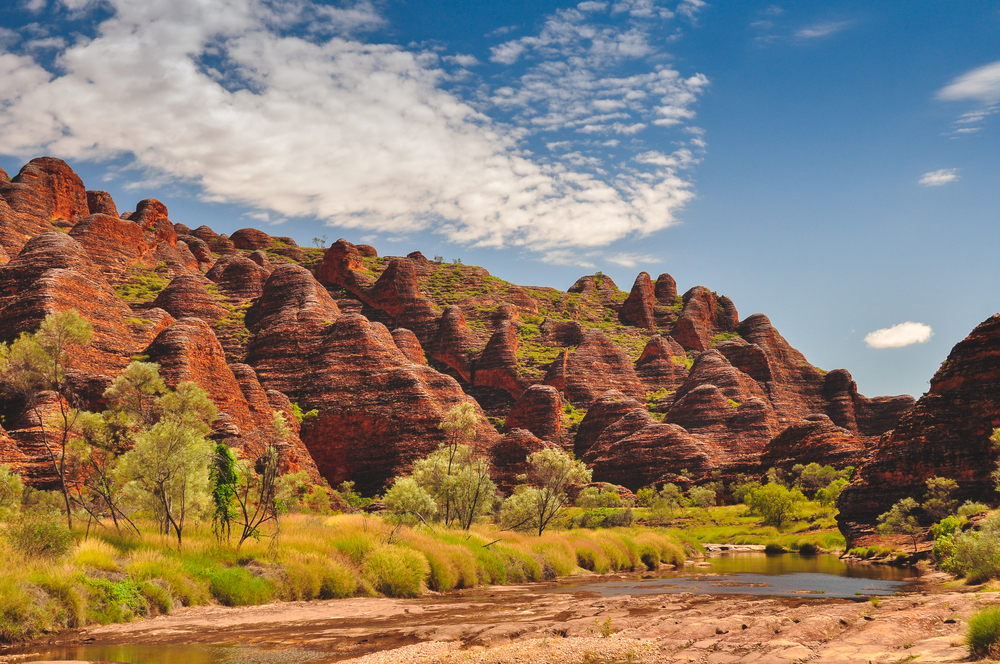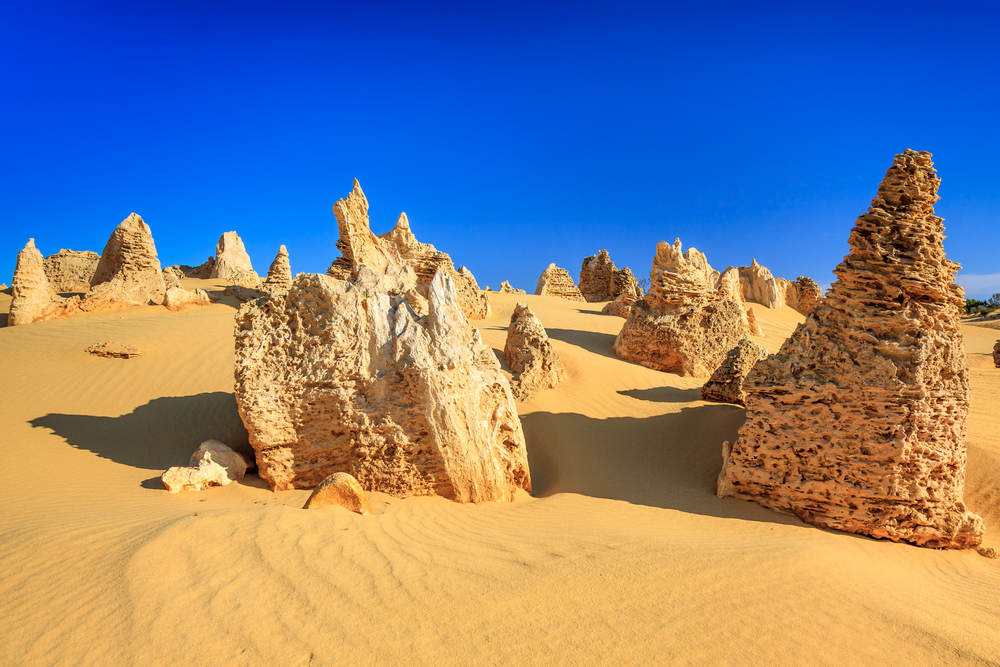Cape Range Overview
Cape Range National Park, located in Western Australia, covers an area of approximately 183 square miles (477 square kilometers) and is situated on the rugged Cape Range Peninsula near Exmouth.
This park is known for its striking limestone ranges, deep canyons, and coastal scenery along the Ningaloo Coast. The landscape is defined by steep gorges such as Mandu Mandu Gorge and Charles Knife Canyon, which showcase dramatic cliffs and winding pathways.
The park also features rolling hills and plains covered in spinifex, acacia, and native wildflowers that bloom vibrantly after seasonal rains. The coastline is equally breathtaking, with white sandy beaches, turquoise waters, and coral reefs forming part of the greater Ningaloo Reef, a UNESCO World Heritage Site.
The park supports a diverse range of wildlife, offering visitors a chance to see unique Australian species in their natural habitat. Red kangaroos are commonly spotted grazing among the arid grasslands, while black-footed rock wallabies inhabit the rocky cliffs and ledges. Euros, a type of large wallaroo, are also present in the rugged terrain.
Birdlife is abundant, with emus, wedge-tailed eagles, and western bowerbirds frequently observed throughout the park. Along the coastal sections, seabirds such as ospreys, terns, and reef herons thrive in the rich marine environment. The waters of Ningaloo Reef, which fringe the park, are home to whale sharks, dolphins, turtles, and vibrant coral reef fish, making the region a key marine biodiversity hotspot.
One of the most popular features of Cape Range National Park is Yardie Creek, a spectacular waterway that cuts through the limestone range and forms a permanent oasis in the otherwise dry landscape. This creek is a prime location for spotting black-footed rock wallabies and bird species that congregate around its shaded waterholes.
Turquoise Bay, another well-visited site, is famous for its pristine sands and excellent snorkeling opportunities, allowing visitors to swim among coral formations and tropical fish just meters from the shore. The park also offers breathtaking viewpoints such as Vlamingh Head, where visitors can witness sweeping vistas of the coastline and, during the winter months, spot migrating humpback whales.
Visitors to the park can experience its natural beauty through various activities, including hiking, wildlife watching, and snorkeling. Popular trails such as Mandu Mandu Gorge Walk and Charles Knife Canyon Road provide opportunities to explore the rugged terrain on foot while enjoying panoramic views of the landscape.
Snorkeling and diving in the Ningaloo Reef waters are among the most sought-after experiences, with the reef being one of the world’s most accessible coral reef systems from shore. Kayaking along Yardie Creek is another immersive way to experience the park’s unique geological formations and wildlife up close. Guided tours are available for those looking to learn more about the ecology and history of the region.
Conservation efforts in Cape Range National Park focus on protecting both its terrestrial and marine ecosystems. The park is part of the larger Ningaloo Coast World Heritage Area, which ensures its ecological significance is recognized globally. Strict regulations are in place to prevent environmental degradation, with efforts focused on managing visitor impact, preserving native flora and fauna, and monitoring marine life health.
Challenges such as climate change, invasive species, and habitat degradation require ongoing management strategies to maintain the park’s delicate balance. However, conservation successes include the protection of key species such as the black-footed rock wallaby and the successful implementation of sustainable tourism practices, ensuring that future generations can continue to experience the park’s extraordinary landscapes and biodiversity.








































































